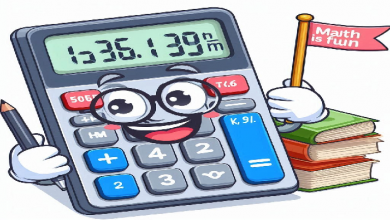ESL Teaching Strategies Every Teacher Should Know

ESL Teaching There is no single right way to teach English; in fact, many Strategiess have become popular over the years. Here are some of the top ESL teaching Strategiess, including Communicative Language Teaching (CLT) and Total Physical Response (TPR), used in today’s classrooms. Learn more about these and other Strategiess and how to use them in effective classrooms.
Whether you’re new to different teaching Strategiess or need a refresher, download this guide to popular ESL Strategiess to review the meaning and application of the latest Strategiess developed by experts in the field.
Why learn ESL teaching strategies?
There are many reasons why learning ESL teaching strategies is important for English teachers. Here are some ways learning the most popular ESL teaching strategies can help you as an English teacher:
- Demonstrating knowledge of these learning ESL teaching strategies and techniques makes you more marketable.
- Using TEFL/TESOL vocabulary in an interview can increase your chances of getting a job.
- Using different Strategiess in your ESL class will make you a more effective and engaging teacher.
- Understanding learning helps you design the best materials and lessons for ESL teaching as a foreign language.
- A learning style can help you use learning objectives systematically to benefit your students.
What does an ESL teacher do?
An ESL Teaching teacher teaches students English which is not their first language. They may work with students or adults of any age and background. ESL involves teaching students to read, write, and communicate effectively. They often use real-life situations to help students better understand language issues. ESL teachers who work in the public school system may work with students of all ages, often taking them out of their regular classrooms to work with them one-on-one or in small groups to improve their English skills.
ESL teachers are responsible for preparing lesson plans, adapting lessons to accommodate different learning styles, and preparing progress reports. These teachers often spend their evenings or weekends at work, meeting with parents or other school staff, or planning lessons. ESL teachers who work with older students, in particular, are often asked to work after hours to accommodate their full-time students’ work schedules. They must be flexible in their teaching style to work effectively with students of all levels. Some of their main activities include:
- Providing students with learning materials
- Always being aware of cultural differences
- Assessing students’ progress
- Helping students overcome problems as much as possible
How to become an ESL teacher?
Here are the basic steps you can take to become an ESL teacher:
- Earn a College Degree
All ESL teachers should have at least a college degree, preferably in teaching, writing, English, or teaching English as a foreign language. Students should take courses in topics such as motivating older students, developing lesson plans, working with individuals with learning disabilities, multicultural teaching, and using technology to teach.
- Consider Second Language Training
While this is not a required step, it is very helpful for ESL teachers who are learning a second language. Aspiring ESL teachers can earn a certificate, associate’s degree, or master’s degree in another language to better prepare them to communicate with non-native English-speaking students.
- Practice English as a Second Language
After earning their bachelor’s degree, teachers must complete an ESL training program. This will teach them how to assess a student’s language abilities, practice conversational skills, and teach English grammar. It will also help them meet licensing requirements.
- Get a License
Like other teachers, ESL teachers must be certified to work professionally. Since requirements can vary from country to country and state to state, it’s important to research the specific requirements for your position.
- Consider Getting a Master’s Degree
While not required, a master’s degree can improve your career prospects and qualify you for more advanced and higher-paying positions. Courses you can explore in a master’s program include literacy development, languages, and academic English.
Common requirements for ESL teachers
There are several requirements for ESL teachers, including:
A bachelor’s degree
Most schools prefer teachers to have a four-year degree in education or another closely related field.
TEFL/TESOL certification
These are the most popular qualifications for teaching English to speakers of other languages. TESOL is designed for teaching English as a second language to people living in an English-speaking country, while TEFL is designed for those who will be teaching English as a second language in a non-English speaking country. However, most jobs will treat the qualifications as equivalent.
Computer skills
ESL teachers are often asked to teach online classes, so they must be computer literate.
Strong written and verbal skills
In order to help students master the English language, both in writing and speaking, ESL teachers must have specific writing and speaking skills.
What are some popular ESL teaching strategies?
The Direct Strategies
ESL Teaching In the direct Strategies, instruction is conducted in the target language. No translation is allowed in class, and the focus is on conversation rather than grammar. As a result, the direct Strategies is a student-centered strategy that has gained popularity in recent years.
Students are expected to learn the target language naturally and intuitively, which is why the direct Strategies is called the “natural Strategies.” Mistakes are corrected when they occur in class, and teachers praise correct language usage. This Strategies is often used when learning English online. Many ESL tutoring companies require teachers to speak only English during class in order to promote a more engaging experience.
Communicative Language Learning (CLT)
Communicative language learning is perhaps the most popular Strategies for teaching English as a second language today. CLT focuses on the learner’s ability to relate to real-life situations. As a result, students learn to ask, accept offers, explain things, and express their feelings and choices.
In addition, because CLT focuses on teaching languages through hands-on activities and problem-solving, it does not focus on grammatical accuracy but rather focuses on mastery.
Activity/Project/Question-Based Learning
This teaching strategy for ESL students can sometimes be considered part of CLT, but it places more emphasis on student independence and autonomy. Inquiry-based learning is a modern Strategies popular in schools around the world. By asking questions and solving problems, the teacher facilitates learning, increasing student motivation and participation in activities and projects.
Total physical response (TPR)
The next process is the TPR (Total Physical Response) process. You may have heard of this ESL teaching strategy before, but what is the total response? The whole body response has become a popular way for students to communicate with teachers through movement. Other examples include pretense, gestures, or linguistic representations.
For example, the teacher and students may be so confused that they pretend to cry when they read the word “sad.” Aggregating physical responses show that students learn the target language better through physical responses than through analysis.
In addition, Total Physical Response is often used when teaching English online and when teaching young students because it not only helps students memorize vocabulary, but also gives them space, their energy, and helps them focus when sitting for long periods of time.
An eclectic approach
Many teachers choose from a list of personal Strategies (e.g., total Physical response) and communication Strategies (direct and indirect). They often combine elements of many other strategies for teaching ESL and use what works best for their students. In general, there is no one-size-fits-all approach. Each group of students will have different learning styles and preferences. For this reason, conducting a needs assessment is a good starting point for teachers who are unsure about which Strategies(s) to use.
Conclusion
ESL Teaching The list of ways to teach English as a second language should not end here! You can find your favorite way to teach ESL/TESOL from the methods above, combine different techniques to teach ESL to your students or develop your own strategies and techniques to teach ESL.
FAQ
What is an ESL teacher?
English as a Second Language (ESL) teachers specialize in helping non-native speakers of all ages and levels learn structured grammar, vocabulary, and pronunciation in written and spoken English, giving them confidence in general language use to communicate clearly and comfortably with their native speakers.
What is the ESL teaching method?
English as a Second Language teaching methods include a variety of teaching methods aimed at facilitating the acquisition of English language skills by non-native speakers. These English teaching methods aim to create engaging, effective, and comprehensive learning that meets the unique needs and backgrounds of ESL students.
What is the ESL qualification?
English as a Second Language (ESL): This certification prepares teachers for situations in which students do not speak English. Students in ESL classes often learn English in an environment where English is the first language.
What degree do you need for ESL?
ESL stands for “English as a Second Language,” and ESL teachers help ESL students learn the English language. To become an ESL teacher, candidates typically need a bachelor’s degree and a teaching license. ESL teachers can work in a variety of settings, from K-12 public schools to community colleges.
What is the full form of ESL?
ESL stands for English as a Second Language and refers to non-native English speakers in countries where English is not the norm. This means that people learn English as a second language alongside their native language. Students all over the world learn English as a second language, from Japan to Spain.
For More information Visit here https://ivytechlogin.com/




